Eschinanthus marble: care and reproduction
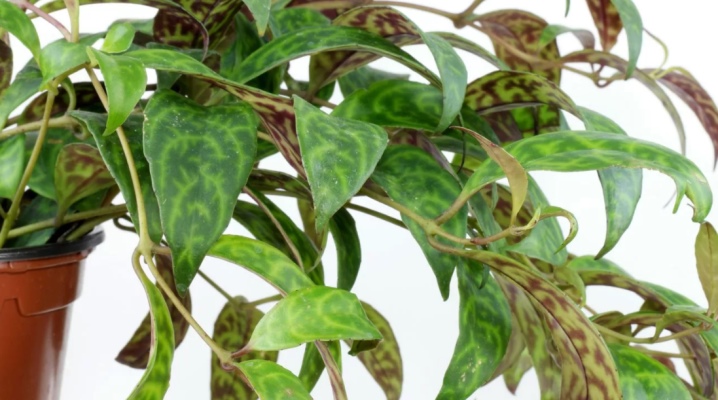
Eschinanthus is one of the exotic home flowers. Its flowing stems with bright inflorescences and leaves of rich green color can decorate and refresh any interior, adding exotic notes to it. However, for all its merits, this plant is not as popular as others. In this article, we will talk about such a subspecies of it as escinanthus marble.
Description of the flower
The name "eschinanthus" comes from two Greek words: aischyneia - "curved" and anthos - "flower". It belongs to the genus of plants of the Gesneriaceae family. Traditionally, this exotic grows in Asia: Thailand, Vietnam, Malaysia, Indonesia and Singapore. There it can be seen on trees all year round, but the Aeschinanthus does not feed off of them. It's just that this graceful plant needs support, and it finds it on the trunks and branches of giants. Most often, specimens are found in red colors, but sometimes you can find flowers of orange and even yellow shades.
The stems reach a height of up to half a meter. They are covered with leaves up to about 10 cm in length. Tubular flowers are located at the ends, they are collected together in 6-10 pieces. Sometimes they bloom one by one, sometimes they gather in inflorescences. The leaves of the marble eschinanthus are of the greatest decorative value. On a dark green background, there are veins of a lighter shade. Their reverse side is painted brown with stains.

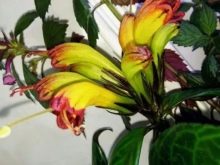
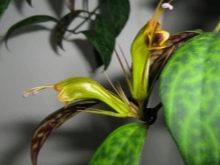
Landing
To grow this flower at home, it needs to create conditions close to its natural habitat: humid air, warmth, sunlight. It is important to take care of the soil as well. Loose soil that is well ventilated is suitable for aeschinanthus. The acidity of the soil is recommended to be low - in the range of pH 5.0-7.0. You can buy a mixture for saintpaulias or orchids, but mix in a little sphagnum or charcoal. If you have not found a suitable primer on the counter, then you can make it yourself. To do this, prepare the following mixture:
- leaf land - two parts;
- peat - one part;
- sand - one piece;
- humus - one part.
To make the soil more airy, and at the same time to disinfect it, auxiliary components are used. It can be sphagnum, charcoal or pine bark. Eschinanthus marble loves good drainage. Put a layer of expanded clay at the bottom of the pot at least three centimeters.

Care
Consider the conditions for keeping a plant at home in more detail.
Light
Eschinanthus grows well in the light, the main thing is not to put it in direct sunlight. He will feel most comfortable in diffused light. The best place for him will be windows in the west or east.
Humidity
Without well-humidified air, this flower will fly around. To prevent this from happening, spray the leaves with a spray bottle. Sometimes it is best to put the vessel with eschinanthus on a tray with pebbles soaked in water.
Temperature regime
The flower will feel perfect at a temperature of 23-25 ° C in summer and 16-18 ° C in winter. Thanks to the winter rest period, it can gather good buds that will bloom in spring. Such a temporary decrease in temperature is optimal.
But if he spends the whole year at a temperature of 22 degrees, then most likely nothing bad will happen to him. Drafts and temperature fluctuations have an extremely negative effect on the condition of this tropical guest.

Watering and feeding
Watering the plant should be moderate, as the surface of the earth dries up. Among his favorite dressings are "Rose" and "Zelenit". Select the dosage based on the information on the package. The main thing is not to feed the flower in the winter.
Reproduction methods
The flower looks great for 3-5 years of its life. At this time, he is guaranteed to delight the owner with lush flowering and rich foliage color. Later, Aeschinanthus gradually loses its former beauty, then its life can prolong reproduction by cuttings. The process goes like this:
- cut cuttings 8-10 centimeters long in spring;
- remove the leaves from below, and treat the tip with charcoal or phytohormones;
- prepare a vessel with sand and peat;
- stick the cuttings into the ground and cover them with foil;
- place the container with shoots in a lighted place.
When the cuttings take root and new leaves begin to appear on them, they are planted in pots. A couple of three things are enough to form a new lush plant.
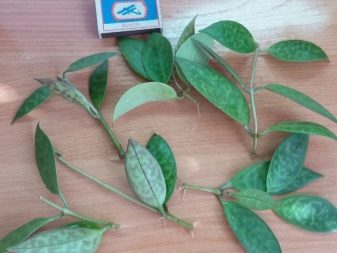
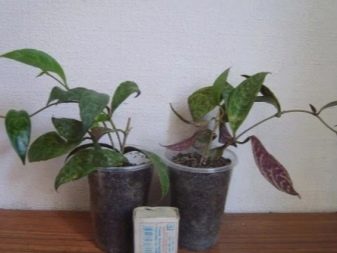
Another effective breeding method is with a leaf with a bud. It can be used in the absence of suitable cuttings. Sequence of work:
- find and cut a suitable leaf with a bud;
- treat the tip of its stem with a fungicide and sprinkle with charcoal;
- dry in the open air for a couple of hours;
- then place the plant in a river sand pot and cover with plastic wrap.
An escape can be expected after 1.5 months.
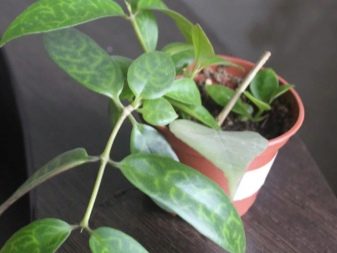
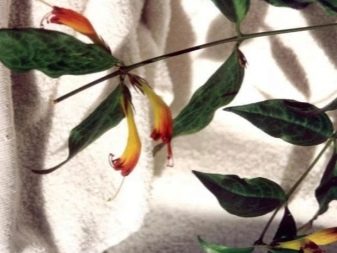
Seed propagation is not the easiest option, but you can also resort to it. Seeds are obtained from wilted flowers, or rather, from the long, fleecy pods remaining in their place. They are poured onto the soil prepared for sowing, and the seedlings are watered through a pallet.
Possible growing difficulties
Like any indoor flower, marble eschinanthus is not always pleasing to the eye with its growth and flowering. There are some problems that growers face. We invite you to familiarize yourself with the most common complaints and solutions to problems.
- Falling leaves. Often the causes of this phenomenon are poor watering, as well as dry air. This is a common problem during the summer months. If the flower behaves this way in the cold season, it means that it is simply frozen. Find a warmer place for him.
- Spots. If the appearance of the leaves is spoiled (light brown spots have formed on them), then too cold water was used for irrigation. The culture feels comfortable when irrigated with water at about 22 degrees.
- Lack of flowers. Sometimes this happens when the flower does not rest in winter. That is, it spends all year round at high temperatures and does not have the possibility of winter recreation. A temporary move of the flower to a colder place will help to solve the problem. With the onset of December, place it where the air temperature is 15 degrees Celsius. Let the flower stand there for a couple of months.
Remember that Aeschinanthus is a guest from Asian countries. Try to create conditions for it as close as possible to the sunny and humid tropics. Then he will be able to appear before you in all his glory and will delight for a long time with his lush flowering and exotic appearance.
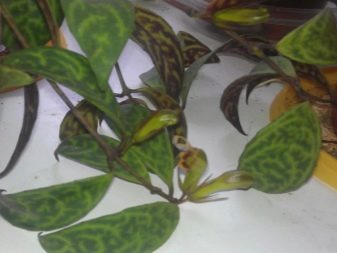
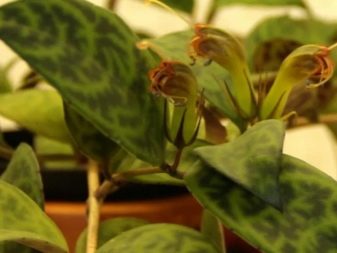
























The comment was sent successfully.